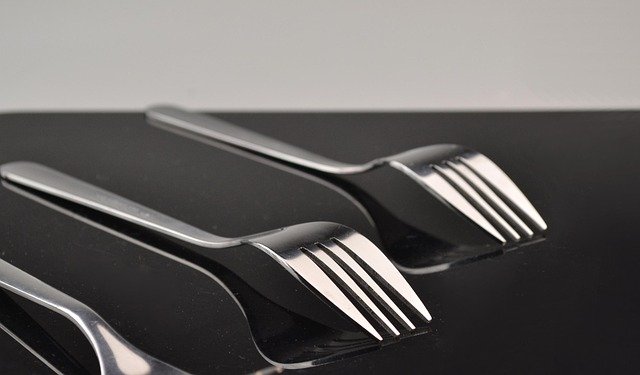Material Guide: Choosing Durable Finishes for Everyday Eating Surfaces
Choosing the right finish for everyday eating surfaces affects durability, cleaning, and long-term preservation of cookware and tableware. This guide outlines common finishes, how they respond to utensils and prep routines, and what to expect for cleaning, maintenance, storage, and sustainability so you can make informed decisions for daily use.

Everyday eating surfaces face repeated contact with utensils, heat, and cleaning agents. Selecting the right material and finish for cookware and tableware helps reduce wear, maintain appearance, and support hygienic prep and sanitization routines. This article explains common finishes, practical maintenance steps, and how organization and storage can extend the life of surfaces without relying on unverified claims. Each section focuses on a specific finish or concern to help you evaluate trade-offs in durability, cleaning needs, and long-term preservation.
What should you know about cookware finishes?
Cookware finishes range from bare metal to engineered coatings; each profile affects heat distribution, reactiveness with food, and how surfaces handle utensils. For example, anodized aluminum offers improved scratch resistance compared with untreated aluminum, while copper provides fast heat response but requires more maintenance. Consider how you prep: metal utensils and high-heat searing accelerate wear on softer finishes. Regular cleaning and appropriate storage minimize corrosion or discoloration. When evaluating cookware purchases, prioritize finishes that match your usual cooking methods and maintenance willingness.
How do tableware finishes affect use and preservation?
Tableware finishes—glazes, enamels, and polished metals—alter scratch resistance, chip likelihood, and stain resilience. Ceramic glazes can resist staining and are generally safe for everyday use, but chipping at edges is a common wear point when mishandled or stored without padding. Enamel-coated metal provides a smooth, nonreactive surface but may chip if dropped. Preservation depends on gentle handling, avoiding abrasive cleaners, and using sensible organization strategies in drawers and cabinets to prevent rubbing and abrasion between pieces.
Are nonstick coatings durable for daily prep?
Nonstick coatings simplify cooking and cleaning but vary in durability. Modern nonstick surfaces use multiple bonded layers to resist peeling and scratching, yet they remain vulnerable to metal utensils and high heat. Lifespan is influenced by prep habits: using silicone or wooden utensils, avoiding overheating, and following manufacturer cleaning guidelines extend performance. Maintenance includes gentle cleaning, avoiding aggressive scrubbing, and storing cookware stacked with protective liners if space constraints require stacking. Expect nonstick to require replacement sooner than metal finishes under heavy daily use.
How do ceramic finishes hold up to utensils and maintenance?
Ceramic-finish surfaces—both fully ceramic and ceramic-coated metals—offer a balance of nonreactivity and moderate scratch resistance. They are often marketed for easier cleaning and fewer concerns about chemical release, but longevity depends on use. Ceramic surfaces tolerate wooden and silicone utensils well; metal utensils increase abrasion risk. For maintenance, use mild detergents and soft sponges, dry thoroughly before storage to prevent mineral spotting, and avoid thermal shock (rapid temperature changes) that can cause cracking or crazing in thin ceramic glazes.
Is stainless finish best for cleaning and sanitization?
Stainless steel finishes are widely used because they resist corrosion, tolerate high heat, and respond well to sanitization routines. They are nonreactive and can be cleaned with stronger detergents and sanitizers when needed, making them common in both home and commercial settings. Surface finish (brushed versus polished) affects visible wear and how easily smudges show; brushed finishes hide scratches better. To maintain stainless, use nonabrasive cleaners, address water spots with vinegar or mild acid solutions, and store in dry areas to limit discoloration from mineral deposits.
How do organization, storage, and sustainability affect choices?
Organization and storage practices directly influence the lifespan of finishes. Using liners or felt between stacked tableware, dedicated utensil compartments, and proper shelf spacing reduce contact wear. Sustainable choices can include selecting durable metal finishes that allow long-term reuse rather than single-use alternatives, or choosing easily recyclable materials. Consider lifecycle factors: a finish that lasts longer may have a higher upfront environmental cost but lower replacement frequency. Proper maintenance and storage maximize preservation and lower the environmental impact over time.
Conclusion Selecting durable finishes for everyday eating surfaces requires balancing cooking habits, cleaning and sanitization preferences, and storage capabilities. Understand how each finish responds to utensils, heat, and detergents, then match choices to your prep routines and maintenance willingness. Thoughtful organization and conservative cleaning extend the life of cookware and tableware while supporting preservation and sustainability goals for regular use.





